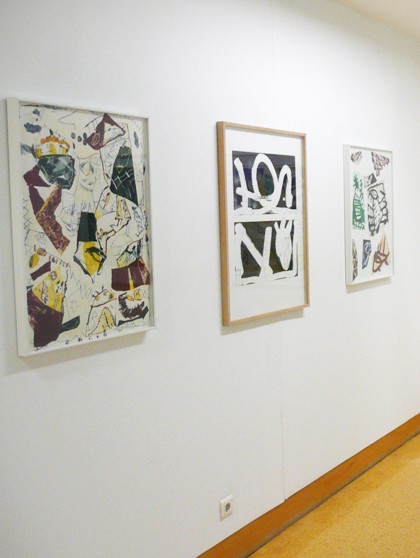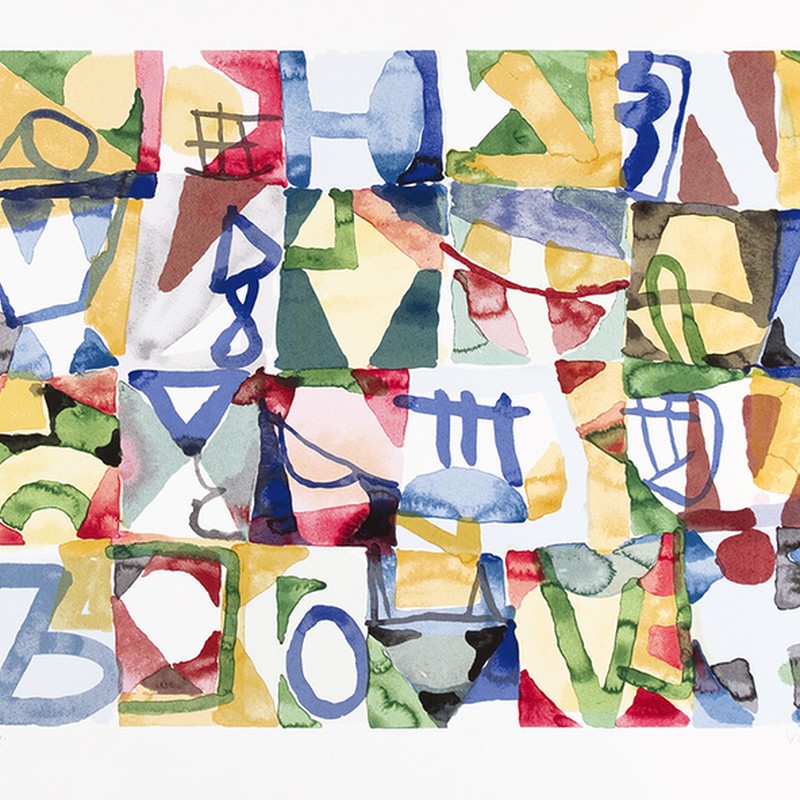



Graphic Work
The Portuguese Screen Printing Center opens on January 31st, 5th; At 6pm, there will be an exhibition of graphic work by the German artist Jan Voss (b. 1936), who studied at the Academy of Fine Arts in Munich between 1955 and 1960 and settled in Paris. The exhibition (17 works) of wood engraving, lithography, etching, aquatint, drypoint and screen printing, represents a journey that took place between 1984 and the present and documents the particular vision of world of what became and remains one of the exponents of European narrative figuration, a response to the triumph and exuberance of American Pop is its contemporary. The expression that appears for the first time in the context of the exhibition "Everyday Mythologies" presented in 1964 at the Museum of Modern Art in Paris (the second version would occur in 1977) would end up identifying not a school or a movement, but a group of artists formally close to Pop Art, very politicized and witnessing the contradictions and dramas of consumer society. The connection to the event and to the reality that Pierre Restany is already aware of. accentuated in 1960, in relation to the new realisms and which gives To give a meaning to this trend, it would be highlighted in the exhibition “Critical Figurations” (1964-1975) which took place in 1992 in Lyon and would remain one of the strengths of contemporary art. Voss, like other great artists of Narrative Figuration, Adami, Erró, Klasen, Monory, Seguí, Télémaque or among us René Bertholo would remain faithful to his initial spirit, whilst renewing his contents and diversifying his expressions. Of note on the occasion of this exhibition of graphic work and the artist's first major exhibition in Portugal taking place at Galeria António Prates in Lisbon, is his connection to the KWY group, the subject of large exhibition curated by Margarida Acciaiuoli and presented in 2001 at the Centro Cultural de Belém, a group of which they were part of in Paris, between 1958 and 1968, in addition to the Bulgarian artist Christo, the Portuguese René Bertholo, Lourdes Castro, Costa Pinheiro, Gonalo Duarte, Escada and João Vieira. KWY (the three letters that do not exist in the Portuguese alphabet) symbolized the desire for a trip that had the meaning of a true poetic adventure, allowing one to expand the domains of the spirit and invent new expressions aesthetics under the sign of the written image relationship. The French critic Gérald Gassiot-Talabot, a great promoter of narrative figuration in the 60s, associates Voss’s style with art. freedom, mystery, humor and “an extremely tasty impertinence” who find their inspiration in children's graffiti and painting on walls in big cities. According to the same critic, the artist belongs to an aesthetic of “fragmenters” which focus on plurality, the concept of series and the relationship between heterogeneous elements, allowing an open reading, oscillating between dreams, reality and memory, episode transcription; lived stories, failed acts, idealized situations, cruel and naive satires. From the 70s onwards, figures allowed themselves to be surpassed by linear elements, increasingly abstract. Yves Michaud, author of the preface to the Galeria António Prates catalog defines principles that are common to the art of art. This is an aesthetic that Voss develops in his graphic work: the tendency to find and represent a common thread in all situations and another to “frame the chaos”, arranging and articulating it in any way possible its shapes, combining the “graphic disorder” and “color disorder” As in Pignon sur Rue, the work now published for the Portuguese Screen Printing Center. Between children's graffiti and those that mark the urban aesthetics of 21st century cities, the shapes and colors of Jan Voss's graphic work evolve into incatalogable arabesques, pieces of a puzzle that gives us back not only the joys but also the anguish and contemporary dreams. Maria João Fernandes
